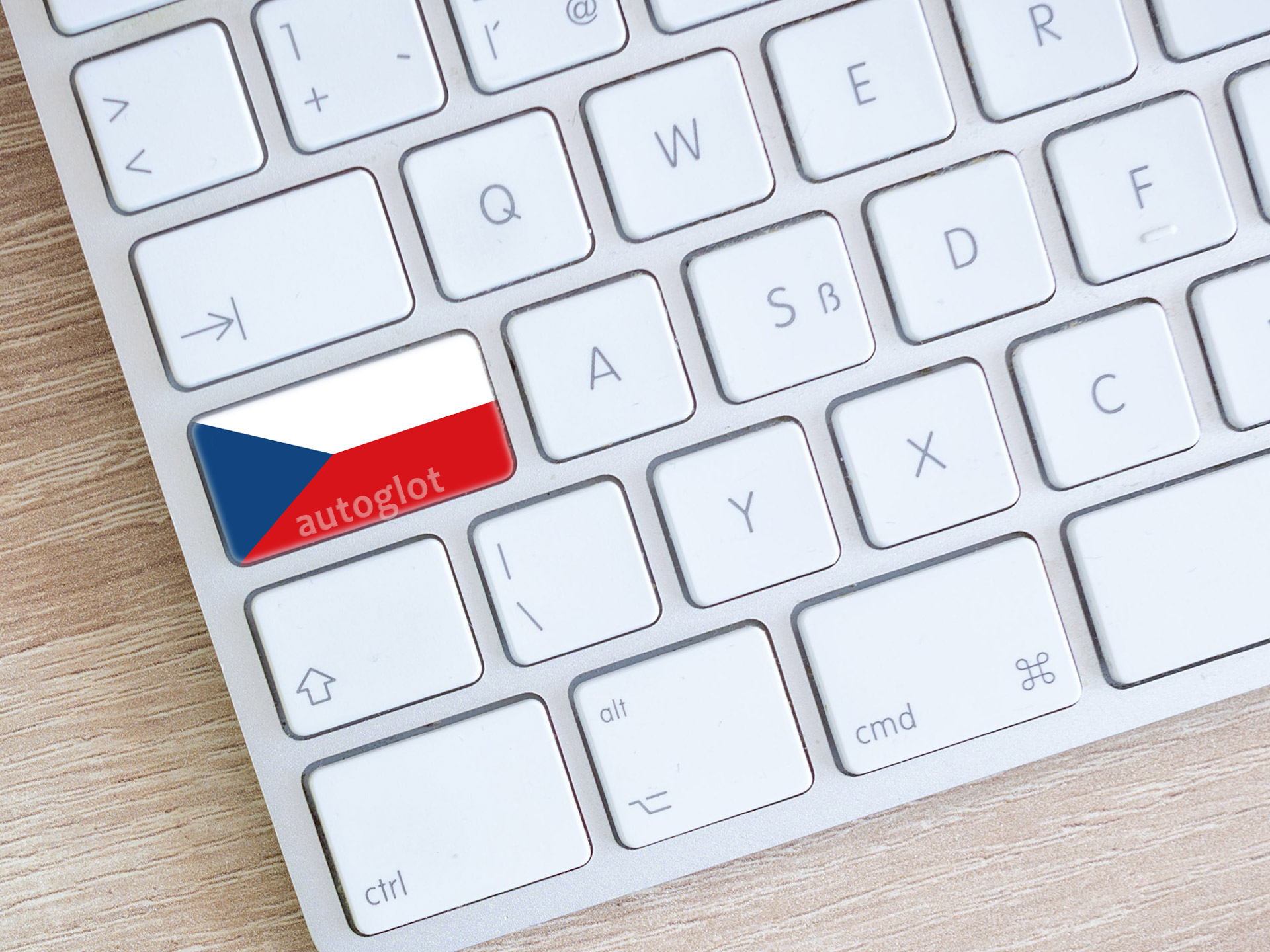
Multilingual websites have become an indispensable asset in the digital landscape, offering a myriad of benefits that extend beyond borders. As the global marketplace continues to evolve, the importance of translation, especially for languages like Czech, cannot be overstated. Catering to the linguistic diversity of your audience not only enhances user experience but also opens up new avenues for growth and engagement.
In the context of multilingual websites, the decision to translate your WordPress website to Czech can greatly increase your online presence.
Introduction to Multilingual Websites and Czech Language
The Czech language, known as Čeština, boasts a unique linguistic identity within the Slavic language family. With its roots tracing back to the medieval period, Czech has evolved over the centuries, embracing influences from neighboring languages.
Learning Czech
Learning Czech may present a challenge to some, given its distinctive features, but its logical structure and phonetic nature make it an accessible language for those eager to explore new linguistic territories. The vocabulary, while distinct, holds a certain charm, reflecting the country’s cultural nuances. Understanding the grammar of Czech is essential for accurate translation, as it follows a system of cases that convey relationships between words, adding depth and precision to communication.
Czech Speakers
With a population of over 10 million Czech speakers worldwide, the language resonates not only in the heart of the Czech Republic but also among diaspora communities. While the Czech Republic stands as the primary stronghold of the language, it’s worth noting that Czech is spoken in neighboring regions and communities, establishing its presence beyond national borders.
The significance of having a Czech version of your website
The significance of having a Czech version of your website cannot be overstated. The internet is a global village, and tailoring your content to the Czech-speaking audience not only broadens your reach but also demonstrates a commitment to inclusivity. As users seek information in their native language, providing content in Czech becomes a strategic move to connect with a diverse and growing online community.
Whether you’re an e-commerce platform, a blog, or a service provider, the decision to translate your website into Czech opens doors to new opportunities, allowing you to tap into a vibrant and dynamic market.
Czech Language: Evolution and Structure
The Czech language, Čeština, stands as a linguistic tapestry woven with historical threads and cultural richness. As an integral part of the West Slavic branch of the Indo-European language family, Czech shares its roots with Slovak and Polish, yet maintains a distinct identity that reflects the nation’s unique history and heritage.

Historical Evolution
The roots of the Czech language trace back to the medieval era, with early written records emerging in the 12th century. Over the centuries, Czech underwent transformations influenced by political and cultural shifts, including periods of Germanic and Latin influences. The 19th century saw a revival of interest in the Czech language, as it played a crucial role in the Czech National Revival movement, contributing to the preservation and promotion of the language.
Learning Czech
While learning any new language poses challenges, Czech offers aspects that make it an intriguing and accessible language for language enthusiasts. Its logical structure, phonetic nature, and straightforward pronunciation contribute to its relative ease of learning. The Czech language utilizes the Latin alphabet supplemented with diacritical marks, adding unique characters that lend a distinctive flavor to the written language.
Structure, Vocabulary, and Grammar
Czech’s grammatical structure is characterized by its system of cases, wherein the roles of words in sentences are determined by inflections. This intricate system provides precision and nuance in communication, but may pose a learning curve for those unfamiliar with case-based languages. The vocabulary of Czech reflects its cultural history, borrowing from Slavic roots while incorporating words influenced by Latin, German, and other neighboring languages.
Phonetics and Pronunciation
Czech pronunciation is generally phonetic, meaning that words are pronounced as they are spelled. This characteristic simplifies the process of speaking and understanding the language for learners. The presence of unique sounds, such as the ‘ř’ (“řeka” – river) and diacritic marks, adds a melodic quality to spoken Czech.
Cultural Significance
Beyond its linguistic intricacies, Czech is deeply embedded in the cultural fabric of the Czech Republic. It serves as a vehicle for literature, poetry, and historical narratives, preserving the collective identity of the Czech people. Embracing the Czech language in your website translation endeavors not only expands your reach but also fosters a connection with the cultural heritage and linguistic nuances of this vibrant Central European nation.
Czech-Speaking People: A Global Linguistic Community
The Czech language, with its distinct charm and historical significance, connects a global community of speakers, forming a linguistic bridge that reaches beyond the borders of the Czech Republic. Understanding the demographics and spread of Czech speakers provides valuable insights into the influence and importance of the language on a worldwide scale.

Population and Demographics
Czech, as the official language of the Czech Republic, is spoken by the majority of the country’s population, exceeding 10 million native speakers. Beyond the borders of the Czech Republic, sizable Czech-speaking communities can be found in neighboring countries, including Slovakia and Austria. Additionally, historical ties have led to Czech-speaking diaspora communities in the United States, Canada, and other parts of Europe.
Czech-Speaking Countries
While the Czech Republic is the primary bastion of the language, Czech maintains a presence in neighboring countries. Slovakia, historically linked with the Czech Republic, shares a linguistic affinity, and Czech is understood and spoken in certain regions. In Austria, particularly in Vienna and its surrounding areas, Czech holds a historical and cultural presence, reflecting centuries-old connections between the two nations.
Official Language Status
The official status of Czech extends beyond the borders of the Czech Republic. In Slovakia, Czech holds a recognized status as a minority language, reflecting the historical and linguistic ties between the two nations. The acknowledgment of Czech as an official minority language underlines its importance in cross-border communication and cultural exchange.
Czech in Daily Life
Czech speakers are not confined to specific geographic regions; rather, the language is a dynamic part of daily life for many individuals worldwide. The Czech diaspora, shaped by historical migrations and geopolitical changes, has contributed to the language’s global reach. Whether used in familial conversations, community events, or cultural celebrations, Czech maintains its relevance in diverse settings, fostering a sense of identity and connection among its speakers.
Czech Communities Around the World
The global nature of today’s interconnected world has facilitated the growth of online Czech communities. Social media platforms, forums, and digital spaces provide avenues for Czech speakers to connect, share experiences, and celebrate their linguistic and cultural heritage. Recognizing the widespread influence of Czech speakers is essential for businesses and content creators seeking to engage with this vibrant community on the digital stage.
The decision to translate your WordPress site into Czech not only acknowledges the linguistic diversity of your users but also opens doors to new opportunities in the global digital landscape.
Czech on the Internet: Navigating the Digital Landscape
In the ever-expanding realm of the internet, the presence of the Czech language is not only pronounced but also integral to effective online communication. As a digital gateway to information and services, understanding the prevalence of Czech on the internet is crucial for businesses and content creators seeking to engage with the diverse and dynamic Czech-speaking audience.

Widespread Influence
The Czech language has established a significant foothold on the internet, reflecting the online activities of Czech speakers worldwide. From social media interactions to e-commerce transactions, the internet serves as a virtual meeting ground for individuals expressing themselves in Czech. Embracing the digital space, the language contributes to a rich tapestry of online content, spanning websites, blogs, forums, and social platforms.
Czech Content Creation
Czech speakers actively contribute to the digital landscape by creating and consuming content in their native language. This content spans a wide array of topics, including literature, news, entertainment, and specialized niches. The digital realm provides a platform for Czech speakers to share their perspectives, experiences, and cultural expressions, fostering a sense of community within the online sphere.
Why Czech on Your Website Matters
For businesses and website owners, recognizing the widespread use of Czech on the internet is a strategic consideration. A Czech version of your website ensures that your content is accessible and resonates with the linguistic preferences of Czech-speaking users. Whether you operate in the realms of e-commerce, education, or information dissemination, providing a Czech-language option demonstrates a commitment to inclusivity and a nuanced understanding of your audience’s preferences.
Reaching a Global Audience
While the internet connects people across borders, the importance of language in digital communication cannot be overstated. A Czech version of your website not only caters to the local Czech audience but also positions your content to reach a broader global audience. Czech speakers living abroad or those navigating the digital space in their native language become potential users and customers, expanding your website’s reach and impact.
Enhancing User Experience
In the digital age, user experience is paramount. Offering content in the native language of your target audience, in this case, Czech, enhances user engagement and satisfaction. Users are more likely to spend time on a website that speaks their language, fostering a sense of connection and trust. This, in turn, contributes to increased user retention, conversions, and overall success in the competitive online landscape.
How to Translate a WordPress Site to Czech: Navigating Linguistic Frontiers
When venturing into the world of website translation, particularly for a WordPress site, understanding the tools and methods available is key to reaching diverse audiences. For those seeking to bridge the linguistic gap and cater to Czech-speaking users, several approaches can be explored. Let’s review the major ways of translating WordPress sites to Czech.

Manual Translation
A traditional method involves manually translating the content of your WordPress site into Czech. While this approach offers precision and control over the translation process, it can be time-consuming and resource-intensive, especially for large websites with extensive content. This method requires linguistic expertise to ensure accurate and culturally relevant translations.
Professional Translation Services
Engaging professional translation services is a reliable option for businesses with specific language requirements and quality standards. Translation agencies or freelance translators can provide accurate and polished Czech translations tailored to your website’s content. However, this method may involve higher costs and longer turnaround times compared to automated solutions.
Machine Translation
Machine translation tools, powered by artificial intelligence, offer a quicker and cost-effective solution for translating WordPress sites into Czech. These tools, while efficient, may lack the nuance and cultural sensitivity that human translators provide. Additionally, accuracy can vary, and context may be misinterpreted, leading to potential issues in conveying the intended message.
Autoglot WordPress Translation Plugin
A standout solution for WordPress users seeking a balance between efficiency and accuracy is the Autoglot WordPress translation plugin. Autoglot employs advanced machine translation technology to automatically translate website content into multiple languages, including Czech. Its user-friendly interface and seamless integration make it a valuable asset for website owners without extensive technical expertise.
Why Autoglot for Czech Translation
Autoglot stands out for its ability to deliver quick and reliable translations, allowing WordPress site owners to effortlessly tap into the Czech-speaking audience. The plugin’s adaptive technology ensures that translations are contextually relevant, enhancing user experience. With regular updates and improvements, Autoglot remains at the forefront of automated translation solutions.
Step-by-Step Guide to Translating a WordPress Site to Czech with Autoglot Plugin
Embarking on the journey of translating your WordPress site into Czech using the Autoglot plugin is a streamlined process that combines efficiency with precision. Follow this step-by-step guide to seamlessly integrate the Autoglot WordPress translation plugin and provide your audience with an authentic and accessible Czech-language experience.
Step 1. Plugin Installation and Activation
- Begin by logging into your WordPress dashboard.
- Navigate to the “Plugins” section and click on “Add New.”
- Search for “Autoglot” in the plugin directory, install the plugin, and activate it.
- This straightforward process ensures that the Autoglot translation capabilities are integrated into your WordPress site.
You may also download Autoglot directly from the official WordPress plugins repository.
Source
Step 2. Registration in Autoglot Control Panel
- Upon activation, access the Autoglot Control Panel by clicking on the dedicated Autoglot tab in your WordPress dashboard.
- Register for an Autoglot account if you haven’t already.
- The registration process involves providing basic information and creating an account, granting you access to the translation services.
Autoglot Control Panel lets you control your translation expenses, track usage and order new translation packages.
Source
Step 3. Plugin Configuration
- In the Autoglot Dashboard, configure the plugin settings according to your preferences.
- Customize language switcher and other visual settings.
- Autoglot offers flexibility in choosing target languages, ensuring that your content is accurately translated into Czech to cater to your audience.
Step 4. Choosing Czech Among Languages
- Within the Autoglot Control Panel, navigate to the language settings and select Czech as one of the preferred languages for translation.
- This step ensures that the Autoglot plugin focuses on providing accurate translations specifically tailored to the Czech language, enhancing the overall linguistic quality of your website.
Step 5. Checking the Results of Automatic Translation
- With the configuration in place, monitor the automatic translation process.
- Autoglot utilizes machine translation technology to analyze and translate your website content into Czech.
- Regularly check the translated pages to ensure accuracy, and make adjustments as needed.
- Autoglot’s adaptive technology refines translations over time, optimizing the linguistic precision of your content.
By following these steps, you can seamlessly integrate the Autoglot WordPress translation plugin into your website, offering Czech-speaking users an authentic and engaging experience. The efficiency of the Autoglot plugin not only simplifies the translation process but also ensures that your content resonates with the linguistic nuances of the Czech language, fostering meaningful connections with your audience.
Conclusion: Navigating the Linguistic Landscape
As we conclude our exploration of translating a WordPress site into Czech, it’s essential to reflect on the challenges and benefits that come with linguistic localization. The decision to embrace the Czech language on your website opens doors to a diverse and vibrant audience while presenting unique considerations for businesses and content creators.
Challenges of Translation
While technology has made leaps in automating the translation process, challenges persist. Nuances, cultural subtleties, and context can be complex, requiring a delicate touch that automated tools may sometimes lack. Understanding the intricacies of the Czech language and its cultural context is vital to delivering translations that resonate authentically with your audience.
Benefits of Czech Translation
On the flip side, the benefits of translating your WordPress site into Czech are manifold. By doing so, you demonstrate a commitment to inclusivity, acknowledging the linguistic diversity of your audience. This inclusivity enhances user experience, fostering a deeper connection between your brand and Czech-speaking users. Furthermore, a Czech version of your website positions your content to reach a broader global audience, potentially expanding your user base and customer engagement.
The Autoglot Advantage
In overcoming the challenges of translation, the Autoglot WordPress translation plugin emerges as a valuable ally. Its advanced machine translation technology, coupled with adaptive learning capabilities, ensures that your content is not just translated but also refined over time for linguistic precision. The user-friendly interface and seamless integration make Autoglot an accessible tool for WordPress site owners, empowering them to navigate the complexities of multilingual content effortlessly.
Unlocking the Potential with Autoglot
When translating your WordPress site into Czech, consider leveraging the power of the Autoglot plugin. Its efficiency, accuracy, and continuous improvement make it a reliable choice for website owners seeking a dynamic and user-friendly translation solution. Visit the Autoglot website, explore its features, and unlock the potential of your website to engage with a global audience.
Language is the key to meaningful connections. By adding the Czech language to your WordPress site, you not only overcome linguistic barriers but also enrich the online experience for a diverse and expanding audience.
The journey of translation is a dynamic one, and with the right tools, like Autoglot, you can navigate the linguistic landscape with confidence, ensuring that your website resonates authentically with Czech-speaking users worldwide.



